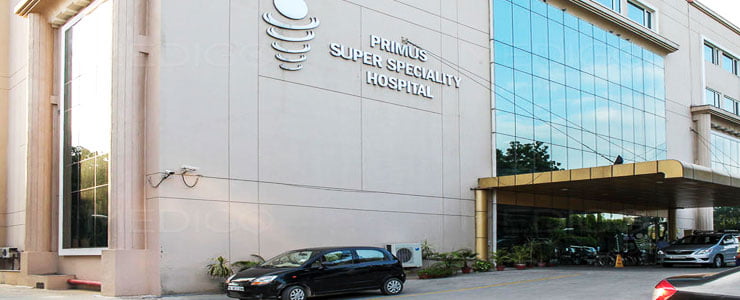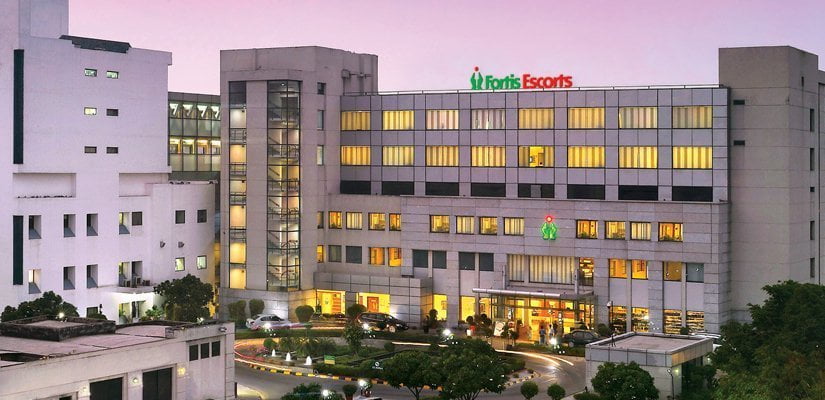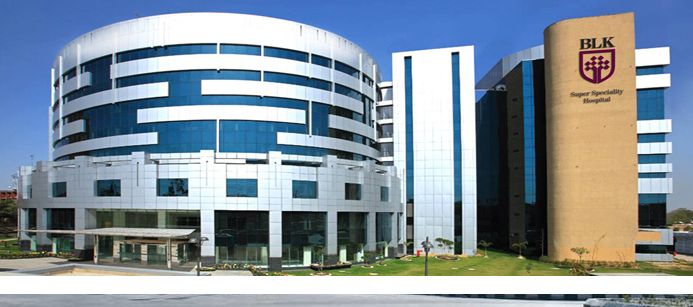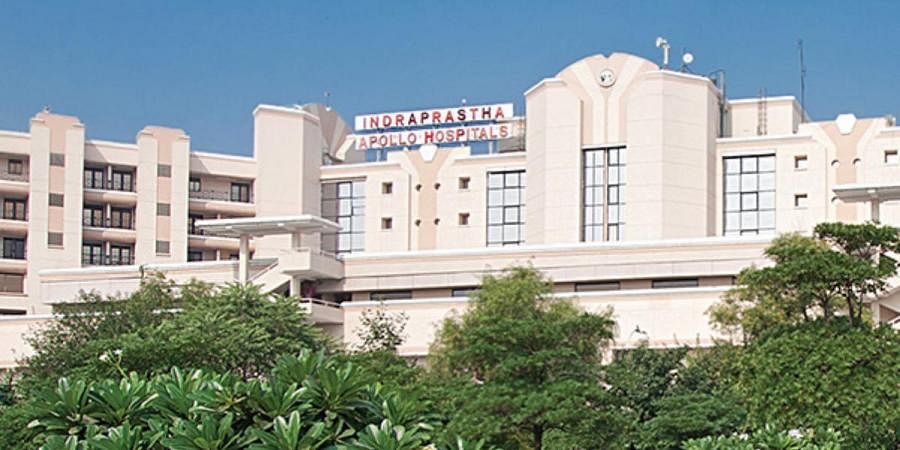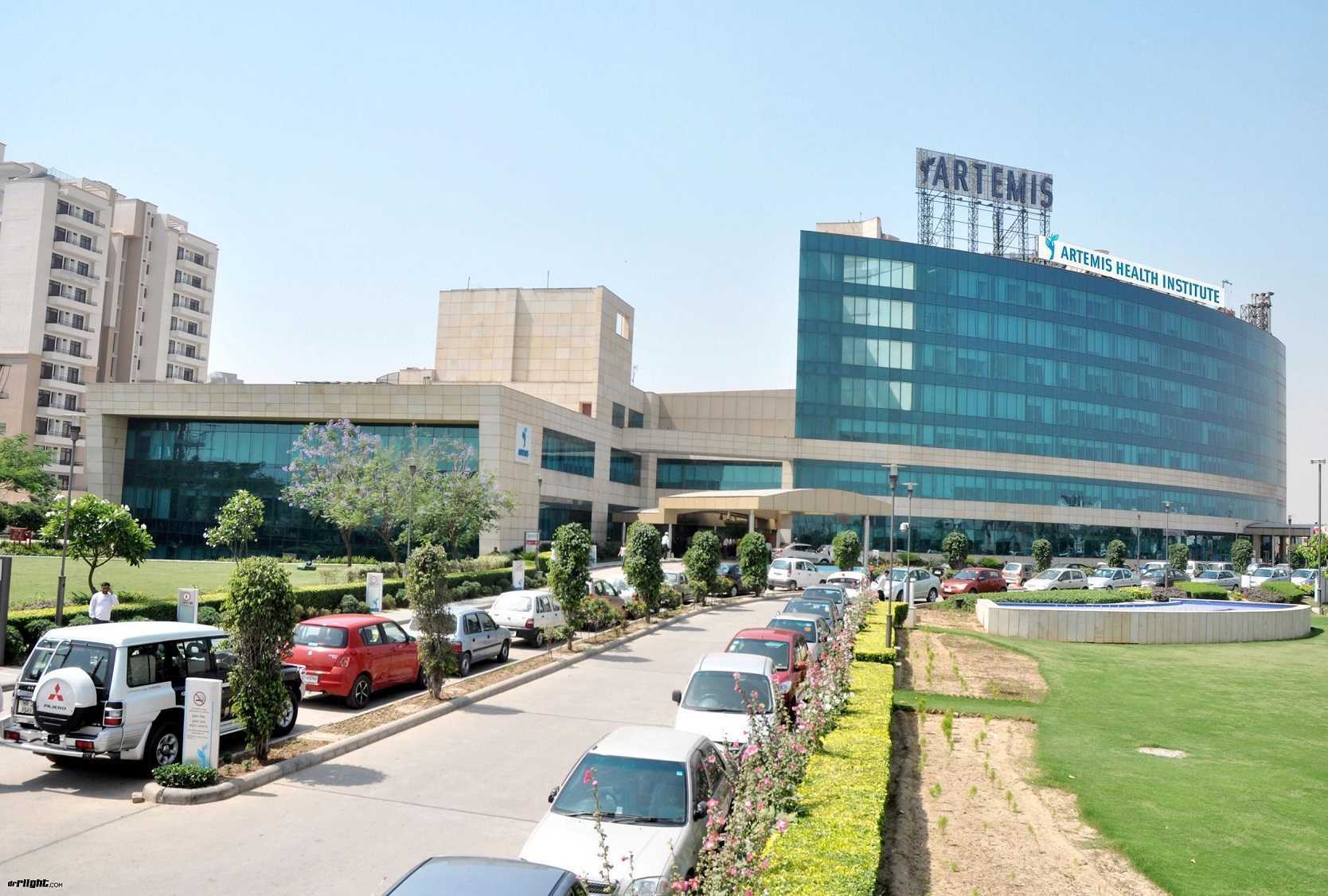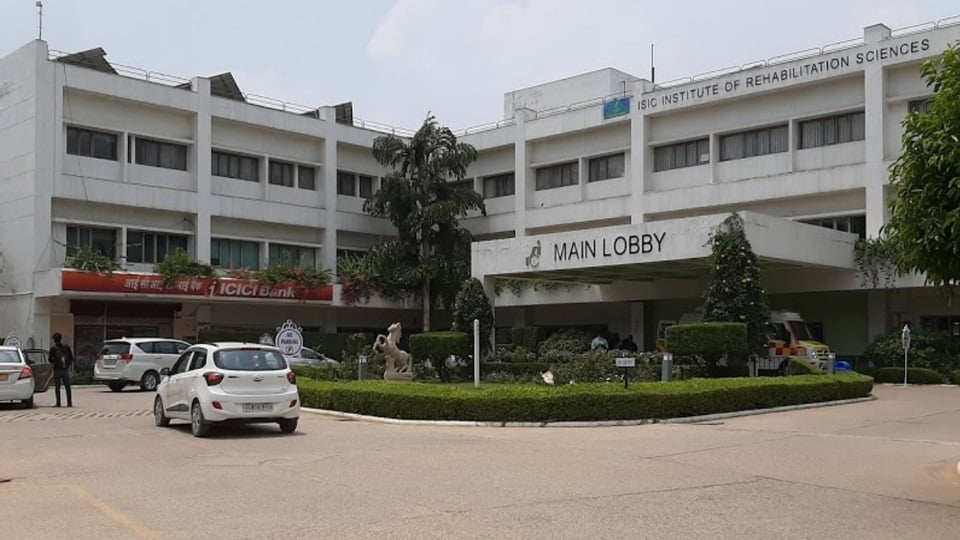Top 10 Best Indian Hospitals In 2022
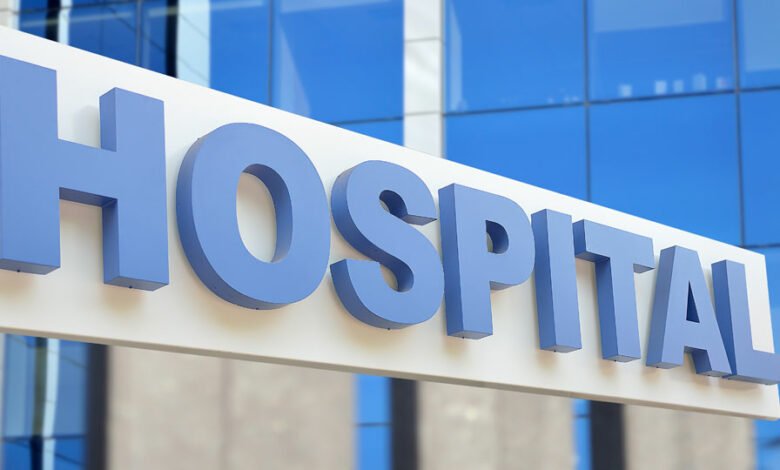
Top 10 Best Indian Hospitals In 2022
Healthcare has become one of India’s most important industries in terms of revenue and jobs. The healthcare sector includes hospitals, medical devices, clinical trials, outsourcing, telemedicine, medical tourism, health insurance, and medical equipment. The healthcare system in India is expanding rapidly due to improved coverage, services, and increased spending by both public and private entities.
India’s healthcare delivery system is separated into two categories: public and private. In major cities, the government, or public healthcare system, has a limited number of secondary and tertiary care institutions and focuses on providing basic healthcare in rural areas through primary healthcare centres (PHCs). The private sector runs the bulk of secondary, tertiary, and quaternary care facilities, concentrating in metros and tier-I and tier-II cities.
The huge pool of well-trained medical personnel in India is India’s competitive advantage. India is also cost-competitive when compared to its Asian and Western peers. In India, surgery costs around a tenth of what it does in the United States or Western Europe.
More than 115 crore COVID-19 vaccine doses had been delivered across the country as of November 19, 2021.
Size of the Market
By 2022, the healthcare market might have grown threefold to Rs. 8.6 trillion (US$ 133.44 billion). India’s public expenditure on healthcare as a proportion of GDP was 1.2 per cent in Budget 2021.
An increasing middle class, combined with an increase in the prevalence of new diseases, is driving greater demand for health insurance. With rising demand for inexpensive and high-quality healthcare, health insurance penetration is expected to grow in the future years.
Health insurance companies’ gross direct premium income increased 13.3% yearly to Rs. 58,572.46 crore (US$ 7.9 billion) in FY21. The health sector accounts for 29.5 per cent of total gross written premiums in the country—recent occurrences. In 2020, the Indian medical tourism market was worth US$ 2.89 billion, and by 2026, it is predicted to be worth US$ 13.42 billion.
In FY19, 697,300 international tourists visited India for medical treatment, according to the India Tourism Statistics at a Glance 2020 report. The Medical Tourism Association has ranked India 10th out of 46 Medical Tourism Index (MTI) locations for 2020-21.
India’s healthcare infrastructure is anticipated to be worth $349.1 billion by FY22.
By 2025, the e-health market is expected to be worth US$ 10.6 billion.

Working towards building a healthier India
India’s healthcare business includes hospitals, medical devices, clinical trials, outsourcing, telemedicine, medical tourism, health insurance, and medical equipment. Due to expanding coverage, services, and increased spending by both public and private entities, the business is growing quickly.
- A growing incidence of lifestyle diseases is driving the healthcare market in India, due to rising healthcare expenses and technological breakthroughs, there is a growing desire for inexpensive healthcare delivery systems, the emergence of telemedicine, rapid health insurance penetration, and government initiatives such as e-health as tax benefits and incentives.
- The healthcare market is predicted to grow at a 39 per cent CAGR from $190 billion in 2020 to $372 billion in 2022.
- India’s digital healthcare industry was worth INR 116.61 billion in 2018 and is expected to rise to INR 485.43 billion by 2024, with a compound annual growth rate (CAGR) of 27.41 per cent between 2019 and 2024.
- The diagnostics industry is predicted to increase at a CAGR of 20.4 per cent from $5 billion in 2012 to $32 billion by 2022.
- The in-patient healthcare market is predicted to increase at a CAGR of 13% from 2015 to 20.
- India’s telemedicine sector is the most promising in eHealth, with sales expected to reach $5.4 billion by 2025, growing at a 31% compound annual growth rate (CAGR).
- Over the next ten years, the National Digital Health Blueprint has the potential to generate $200 billion in additional economic value for India’s healthcare business.
- India boasts the world’s most extensive government-sponsored health insurance programme (Ayushman Bharat).
- India’s overall investment in medical education: during 2014, INR 17,691.08 crore has been invested in 157 new recognised medical colleges.
- For greenfield projects, 100% FDI is permitted under the automatic route. Under the government method, up to 100 per cent of FDI can be invested in brownfield projects.
How Does the Healthcare Industry Contribute to the Economy?
Despite the economic slump, healthcare is one of the fastest-growing sectors. The global rise of this industry is being fueled by an increasing number of hospitals, medical device manufacturers, clinical trials, outsourcing organisations, telemedicine providers, medical tourists, health insurance companies, and medical equipment manufacturers.
Furthermore, growth is being maintained thanks to public and private sector efforts to boost investments and expand networks, services, and coverage.
A sound healthcare system is critical for reducing family burdens and contributing to national progress. According to OCED Observer, a robust healthcare system supports a strong economy; in fact, their research found that a ten per cent increase in life expectancy results in 0.4 per cent annual economic growth. Healthcare and life expectancy are becoming increasingly important in developing countries economic success.
With a vast pool of well-trained medical experts and consistent investment in healthcare infrastructure, some of them have even become competitive. In several of these countries, the cost of therapy has dramatically decreased in recent years.
The debate continues over whether forcing people to pay for healthcare or subsidising healthcare is good. Out-of-pocket hospitalisation has exposed entire communities to enormous financial constraints, resulting in poverty in many cultures. On the other side, subsidisation has enraged many private players, resulting in lower performance, corruption, and a lack of competitiveness. There are also other obstacles to overcome. Private insurers, for example, rarely pay attention to government-subsidised insurance.
It’s past time for politicians to ensure that healthcare corporations see people as partners in their growth rather than customers. This will assist in making healthcare more accessible, affordable, and available. At the moment, high-quality healthcare is a luxury limited to urban areas. The majority of people in most developing countries live in rural areas with limited access to healthcare, although contributing more than half of the country’s GDP.
The dismal doctor-to-patient ratio in most developing countries rural areas continues to be a source of concern: technology, government initiatives, and community participation all help to put healthcare institutions in perspective. The Aspirational District Program (ADP) of the Indian government aims to enable communities to reconstruct their lives. The programme engages communities in taking responsibility for their health and well-being, reaching out to nearly 200 million individuals (about 15% of India’s population).
ADP now plays a critical role in lowering maternal mortality and controlling other infectious diseases. Another significant feature of ADP is the higher rate of economic development in various parts of the country. In other words, ADP demonstrates that people’s health is linked to their financial well-being.
It’s past time for the healthcare industry to prioritise investing in people as a primary metric for success. Thanks to technological advancements, many pharmaceutical corporations now have their service organisations to reach out to the most vulnerable members of society. They have successfully reached out to the rural populace, improved their healthcare, and contributed to the region’s economic prosperity. Other healthcare organisations can learn from pharma corporations and start their outreach programmes, allowing individuals to help themselves live healthier lives and contribute to the nation’s economic progress.
List of Top 10 Best hospitals in India 2022
1. Primus Super Specialty Hospital, New Delhi
2. Fortis Hospitals, New Delhi
3. BLK Super Speciality Hospital, New Delhi
4. Indraprastha Apollo Hospital, New Delhi
5. Artemis Hospital, Delhi
6. Shalby Hospital, Ahmedabad
7. Indian Spinal Injuries Center, New Delhi
8. Max Super Speciality Hospital, New Delhi.
9. Lilavati Hospital, Mumbai
10. Tata Memorial Hospital, Mumbai
1. Primus Super Specialty Hospital, New Delhi
Managing Director– Dinesh Batra§
Total Beds– 130+
Address – Chandragupta Marg, Chanakyapuri, New Delhi 110021
Contact– +91 11-6620-6640 +91 11-6620-6630
Primus Super Specialty Hospital is a top 10 hospital in India and one of the best hospitals in India for a kidney transplant, with the most advanced medical technology available anywhere in the world. They perform many spine surgeries under local anaesthetic with the most up-to-date equipment and procedures, allowing patients to heal faster and spend less time in the hospital.
Primus Super Speciality Hospital is a cutting-edge multispecialty hospital conveniently located in the centre of New Delhi, India’s capital.
The hospital’s infrastructure and tranquil environment facilitate faster recovery, health, and well-being. Primus Super Speciality Hospital has set new standards in medical care with renowned surgeons worldwide, outstanding infrastructure, and cutting-edge modern technologies. They want to be the top medical treatment centre in the world.
The Primus team is always striving to improve the quality of their care, processes, and the service they deliver. Primus Hospital’s great team has been and continues to be the organisation’s defining feature.
Primus Super Speciality Hospital are dedicated to every social cause and the upliftment of the country and the globe as a whole, and they live by the slogan of health to all. Primus Hospital has campuses in India, Nigeria, and the Republic of Benin. The hospital also has dozens of satellite clinics around the globe.
2. Fortis Hospitals, New Delhi
MD– Ashutosh Raghuvanshi
Total Beds– 158+
Address – A/2, Rohtak Rd, Karol Bagh, New Delhi
Contact– +91 124 4921021
Fortis Healthcare Limited is a prominent supplier of modern healthcare and best kidney transplant. It is one of the largest healthcare companies in the world, with 36 facilities. It has highly skilled and qualified doctors and paramedics. Fortis Healthcare earned ten prizes in various categories at the 2019 FICCI Medical Travel Value Ceremony.
Fortis Hospital is a leading multispecialty hospital in Delhi that provides comprehensive medical care to all patients. Fortis hospital has a pioneering role in the healthcare sphere, provides services in a safe and compassionate environment, enhancing the well-being of patients and their families. The doctors and paramedical staff of Fortis Hospital in Delhi are highly skilled and experienced. Fortis Delhi is dedicated to providing world-class, comprehensive treatment to every patient.
3. BLK Super Speciality Hospital, New Delhi
Total Beds– 650+
Address – Pusa Rd, Radha Soami Satsang, Rajendra Place, New Delhi
Contact– 011 3040 3040
BLK Super continuously ranked among the Top 10 Multi Super Specialty Hospitals in Delhi NCR. It was inaugurated by the Prime Minister and is one of the best hospitals in India for a kidney transplant. BLK Hospital keeps track of advances and hires replicas of cutting-edge medical and therapeutic techniques in the greatest European hospitals.
The Fortis Hospital in Shalimar Bagh, New Delhi, is a multispecialty hospital with super specialities within departments committed to providing high-quality medical care. This is one of the largest hospitals, which opened in 2010 and serves the citizens of North, West, and North-West Delhi and the surrounding states. It is situated between the Subhash Place and Azadpur Metro stations in North Delhi. It is also easily accessible to people who reach the city via Karnal and Rohtak routes.
4. Indraprastha Apollo Hospital, New Delhi
MD– Suneeta Reddy
Total Beds– 710+
Awards– Indian Radiation Oncology Enabling Technology Leadership Award, Excellence in Quality Award 2020, The Golden Peacock Awards, and many more.
Address– Mathura Rd, New Delhi,
Contact– 011 7179 1090
In the last 30 years, it has authored one of India’s most glorious success stories. The Apollo Group is not only one of the largest organised healthcare companies in the region, but it also played a crucial role in launching the country’s private healthcare revolution. The hospital features 17 modern, well-equipped mobile operating rooms, each with three levels of air filtration and a gas scavenging system, to assure patient safety.
Indraprastha Apollo Hospital is the second most profitable hospital in Delhi, owned by the Apollo Hospital Group, India’s largest healthcare conglomerate. This hospital first opened its doors in 1995. The Joint Commission International (JCI) USA just approved Indraprastha Apollo Hospital as the first internationally accredited hospital in India and South Asia in 2005. In 2011, JCI re-accredited the hospital for the fourth time, making it the first hospital in India.
In November 1998, Apollo Hospitals performed India’s first successful kid and adult liver transplants.
5. Artemis Hospital, Delhi
MD– Dr Devlina Chakravarty
Total Beds– 400+
Address – Sector 20 Dwarka, New Delhi
Contact– 011 7111 1000
Artemis, one of India’s top ten hospitals and one of the best for kidney transplants, offers a comprehensive range of specialised medical and surgical treatments, as well as a wide range of inpatient and out-patient services. It is the first JCI and NABH-accredited hospital in the city and received the ‘Asia Pacific Hand Hygiene Excellence Award’ from the WHO. Artemis is consistently ranked among India’s top ten hospitals.
Artemis Hospital, a 400-bed state-of-the-art multispecialty hospital in Gurgaon, India, was founded in 2007. It is spread across 9 acres.
Artemis, one of India’s most modern hospitals, offers a broad range of advanced medical and surgical operations, as well as a comprehensive mix of inpatient and out-patient services. Artemis has put cutting-edge technology in the hands of leading doctors from around the country and beyond, allowing them to set new standards in healthcare.
Medical techniques and practises at the hospital are evidence-based and benchmarked against the best in the world. They have gained a reputation as one of the country’s most regarded hospitals by providing top-notch treatments in a pleasant, open, patient-centered environment, as well as affordability.

6. Shalby Hospital, Ahmedabad
MD– Vikram Shah
Total Beds– 2000+ in 11 hospital units
Address – S G Road, Ahmedabad, 380015, Gujarat
Contact– +91 79 40203000
Shalby’s recognition as a multispecialty tertiary hospital chain in the Indian healthcare market. Shalby Hospitals is a world-renowned Joint Replacement Center with numerous firsts to its credit.
Shalby Hospitals has established several records as a world-renowned Joint Replacement Center. They have successfully done thousands of joint replacement procedures since 2007, and the number is growing every day. Shalby’s evolution into a multispecialty hospital network in less than 26 years speaks loudly about our credibility and commitment to healthcare excellence.
7. Indian Spinal Injuries Center, New Delhi
Chairman– P. S. Ahluwalia
Total Beds– 178+
Address – IAA Colony, Sector C, Vasant Kunj, New Delhi 110070.
Contact– 011 4225 5225
The Indian Spinal Injuries Centre was established by a Memorandum of Understanding between the Indian and Italian governments. The plan was implemented on behalf of the Italian government by San Raffaele Hospital in Milan. It is now a model institution that is on par with the best in the world. ISIC’s goal and guiding principle are to provide medical treatment to everyone, regardless of their financial ability to pay.
This is a hospital with heart and soul, a place dedicated to providing world-class customised health care and assisting patients in experiencing “the joy of living.” Mr H.C. Sarin was the Founder Chairman, and it was registered under the Society Registration Act. Major HPS Ahluwalia, a battle veteran of the 1965 Indo-Pak conflict who conquered Mount Everest on May 29, 1965, is the current Chairman.
The hospital opened in 1996 and is now a 178-bed super speciality, tertiary care facility specialising in spine, orthopaedics, rheumatology, sports medicine and joint replacement, as well as neuro-sciences. It has a top-notch rehabilitation centre with hydrotherapy. Support services include cardiology, general medicine, and general surgery.
It has cutting-edge diagnostic and surgical technology, as well as a highly qualified team of doctors, surgeons, and physiotherapists who have all received their training at the world’s top institutions. ISIC has established itself as a key referral centre. Its patients come from all over the world, not just from India.
8. Max Super Speciality Hospital, New Delhi.
Chairman– Analjit Singh
Total Beds– 530 +
Awards- FICCI Healthcare Excellence awards, ABP News Healthcare Awards, Health Brand of the Year, and many more.
Address – Saket Institutional Area, New Delhi
Contact– 011 2651 5050
The Max smart super speciality hospital in Saket is a prominent multispecialty hospital in south Delhi that has established its high standards inside the medical regime. It is a division of Gujarmal Modi Hospital and Research Centre for Medical Sciences, and it has approximately 250 beds for patient care. Twelve high-tech modular OTs (operation theatres) and an advanced emergency and observation unit are available at the hospital. With 72 critical care beds, an advanced dialysis facility, and a dedicated endoscopic section, the Max smart super speciality hospital in Saket is well-equipped.
The hospital is a tertiary care facility with 256 slice CT angio, electrophysiology navigation in cath labs, 3.0 Tesla digital broadband MRI, and a flat panel C-Arm detector. Orthopaedics, Cardiac Sciences, Paediatrics, Neurology, Urology, Gynaecology, and Obstetrics are among the medical specialities offered at this Saket hospital.

9. Lilavati Hospital, Mumbai
- Managing Director– Shreekant Sapatnekar
- Total Beds– 323+
- Number of Consultants– 300+
- Address – Bandra West, Mumbai, Maharashtra 400050
- Contact– 022-26751000/26568000
Lilavati Hospital is an Indian multispecialty hospital. Patients from all around the world flock to this facility for treatment. The hospital’s slogan is, “Human care is more than treatment.” The Sanskrit phrase “SarvetraSukhina: Santu, SarveSantuNiramaya” inspires this hospital’s commitment to providing high-quality care with a human touch.
The hospital is centrally placed in Mumbai, close to local and international airports. It first opened its doors in 1997 with only ten beds and 22 doctors. It now has 314 beds, one of the largest intensive care units (ICUs), the most advanced 12 surgery theatres, over 300 consultants, and approximately 1,800 employees. Daily, the hospital sees about 300 in-patients and 1,500 out-patients.
10. Tata Memorial Hospital, Mumbai
MD– R. A. Badwe
Total Beds– 441+
Awards– The 2006 Global award for Excellence Cancer Organization.
Address– E Borges Road, Parel, Mumbai – 400 012 India
Contact– +91-22-24177000, 24177300, 24161413.
The Tata Memorial Hospital is located in the Parel neighbourhood of Mumbai, India. TMH is another name for TMH. It’s a cancer treatment and research centre affiliated with the Advanced Centre for Cancer Treatment, Research, and Education (ACTREC).
The centre is a major cancer centre in this area of the world, serving as a national comprehensive cancer centre for cancer prevention, treatment, education, and research. Since 1962, it has been an autonomous body sponsored and governed by the Indian government’s Department of Atomic Energy, which also oversees the institute’s administration.
The Sir Dorabji Tata Trust commissioned the Tata Memorial Hospital on February 28, 1941, as a centre of lasting value and a mission of care for the Indian people. Dr Rajendra A Badwe, who took over as director of Dr K. A. Dinshaw, is the current director of the hospital.
Edited and published by Ashlyn Joy

